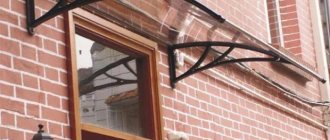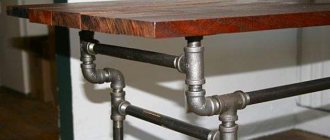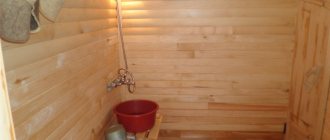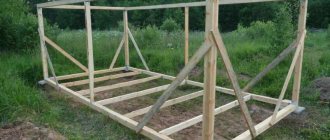Features and selection of plunge-cut saws
When processing wood using power tools, the problem of accurate cutting often arises. Unfortunately, even modern disk models cannot boast of a perfectly executed job. This is due to the impossibility of proper control over the position of the cutting tool relative to the workpiece. To solve the problem of sawing accuracy, a plunge-cut circular saw was invented and put into production, which immediately gained popularity among woodworking craftsmen and became a sales leader.
The best plunge-cut saw in terms of price-performance ratio
To be honest, among the cheapest models of plunge-cut saws for cutting laminated chipboards, it is almost impossible to choose a favorite. All models in the budget segment have many disadvantages. That is why we chose an affordable saw in the mid-price segment, which has an optimal price-quality ratio. Such a saw with the perfect balance of cost and quality was: BOSCH GKT 55 GCE. This particular model is in the highest demand among novice furniture makers and has good characteristics at a fairly affordable price.
Sanding wood
If you decipher the abbreviation angle grinder, it is clear that finishing is the main purpose of the “grinder”.
Cord brushes
They are used primarily for primary (rough) sanding of wood, when it is necessary to smooth out the unevenness of the sample.
End discs
The name speaks for itself. These attachments are used to process the end parts of wooden blanks (cuts). They are especially effective if you have to deal with corner (oblique) cuts.
Advantages and disadvantages of operation
Working with a plunge-cut saw
The scope of plunge-cut saws is wide - from the continuous production of wooden products and furniture to work in a home workshop. However, to analyze the relevance of purchasing such equipment, its positive and negative aspects of operation should be identified.
The main advantage of this hand-held woodworking tool is its versatility. With its help, you can make precise cuts to form blanks, trim the edges of furniture panels made of fiberboard or chipboard. If you have additional components, it becomes possible to create a shaped cut.
List of the main advantages of using plunge-cut saws for wood:
Preparing the guide rail
First, let's figure out what elements the guide rail has and why they are needed.
Anti-chip protection or anti-splinter tape. Protects the workpiece from chipping, which most often occurs when sawing laminated chipboard. This is the most wearing part of the guide rail and must be replaced regularly.
- The sliding band (anti-friction) reduces friction between the plunge-cut saw and the guide bar, allowing the saw to glide easily along the guide bar.
- Anti-slip tape is necessary to create increased friction between the guide tire and the workpiece, due to which the guide tire is securely held on the workpiece during processing. For even more reliable fixation of the guide rail on the workpiece, clamps are used.
- Auxiliary grooves are used for attaching additional equipment and for connecting guide rails to each other.
For comfortable work, the length of the guide rail must be greater than the length of the workpiece, at least 400 mm (250 mm before the workpiece and 150 mm after the workpiece). In this case, it is possible, if necessary, to completely immerse the saw without cutting into the workpiece at the beginning and finish sawing the workpiece at the end, while the saw will be guaranteed to be with its entire supporting surface on the guide rail, and the workpiece will be sawn.
Standard guide rail lengths are 800 mm, 1080 mm, 1400 mm, 1900 mm, 2400 mm, 2700 mm, 3000 mm and 5000 mm. Non-standard lengths can be cut from a longer standard guide rail. For example, to work with sheet acrylic stone having a standard size of 3600x600 mm, it is recommended to cut a guide rail 5000 mm long into two parts 4000 mm and 1000 mm. In this case, the long part (4000 mm) is used to cut the sheet lengthwise, and the short part (1000 mm) is used to cut the sheet crosswise.
It is possible to join the guide rails using two connecting plates. An important difference between FESTOOL guide rails and most competitors is the presence of two grooves for simultaneous use of a pair of connectors. Splicing the guide rails using a pair of connectors produces a much more stable bending connection. This advantage is especially evident when milling with a vertical router along a guide rail, when a force perpendicular to the guide rail arises, tending to move this rail and rotate (displace) the junction of the guide rails.
Before you start working correctly, the plunge-cut saw needs to be, as the Germans say, “married” to the guide rail, or, more simply, to cut the anti-splinter tape. For this purpose, the saw is mounted on a guide rail and positioned using two eccentric clamps. By rotating them clockwise and in the opposite direction, it is necessary to find a compromise between the absence of lateral play of the saw on the guide rail and the ease of longitudinal movement of the saw along the guide rail. After the backlash is selected and absent, and the saw slides along the guide rail without excessive force, it is necessary to file the anti-splinter tape (chip protection). The manufacturer recommends placing the guide rail on any suitable base and sawing off the anti-splinter tape (chip protection) with the saw immersed as much as possible. Now the bottom edge of the splinter guard always aligns with the cutting edge of the saw, not only in square cuts, but also in all other angle settings.
Tool selection options
Pipe for connecting the exhaust system
Finding the best plunge saw model can be challenging. This is due to the large assortment and different indicators for each type of tool as a whole. Therefore, during selection, technical and operational characteristics should be comprehensively considered. Additionally, work safety requirements are taken into account.
One of the determining parameters of choice is the ease of use of hand tools. Therefore, before purchasing, it is recommended to hold the plunge-cut saw in your hands and, if possible, make several test cuts. This will help determine the degree of operating comfort and will allow you to form an initial opinion already at the stage of analyzing the models.
Additional features
When working with wood, it is often necessary to cut the workpiece lengthwise. Some circular saws and miter saws are better suited for this than others. It would be wrong not to talk about these differences.
The design of some models of circular saws allows them to be mounted on a work table or workbench with the blade facing up. The protective cover of the disk is retracted and fixed. It looks like a stationary saw. The operator holds the wooden piece in his hands and feeds it onto the rotating disk. Sometimes it is more convenient to work this way than to move the saw around the part.
Description of technical characteristics
Plunge saw with tilt mechanism
After determining the feasibility of purchasing a circular plunge-cut saw, you should study the general technical characteristics of this tool. They may differ slightly from each other. The reason for this is the design of a particular model and its operational properties.
First of all, you should pay attention to the power of the electric motor. In the vast majority of cases, the power plant is designed to be connected to a 220 V power supply, which allows you to perform work at home. The power of the electric motor directly affects the processing speed of the wooden workpiece. Additionally, it is necessary to take into account the hardness of the part, its relative humidity and the depth of cut.
The main technical characteristics of plunge-cut saws include the following:
- maximum depth of cut. It depends on the parameters of the feed block, the diameter of the saw blade and the angle of inclination of the cut;
- the angle of inclination can be from 45° to 90°;
- drive shaft rotation speed. To reduce weight, gear transmission of torque is used from the engine to the shaft with the cutting tool;
- saw parameters - maximum and minimum diameter, seat size, thickness;
- distance from the blade to the edge of the support pad;
- power of the power plant;
- diameter of the pipe for connection to the system for removing chips and wood dust;
- mass and weight of the structure.
Additionally, cutting speed should be taken into account. It may depend on the density of the workpiece and the parameters of the saw blade.
To quickly and efficiently process wooden workpieces, you should choose the right cutting tool. To do this, you need to know the nomenclature and symbols on the saw blade.
BISON ZPT-210-1400 L
When you need to buy a good trimmer for your home, this model will definitely be the first on the list of contenders. A small-sized household-grade desktop unit is designed for working with wood workpieces with a thickness of no more than 60 mm. This is a good, budget saw without broaching, equipped with a laser marker, clamps for fixing workpieces and a 210 mm saw blade. The calibrated design of the crosscut allows you to set the sawing angle without error and achieve an accurate cut. Ease of operation is achieved due to easy setup of the unit, and high-quality cutting is achieved due to good power and high speed. A crosscut machine will be an excellent solution when purchasing tools for woodworking in the country, as well as for building various utility structures on a personal plot. With decent workmanship and affordable price, it is difficult to detect objective shortcomings in this popular saw.
Advantages:
- optimal combination of power and speed
- reliable, time-tested design
- laser marking
- Possibility of connecting to a vacuum cleaner
- compact dimensions
- presence of shaft lock
Flaws:
- it is not possible to adjust the angle position with clamps
How is it different from a circular saw?
The main difference between a plunge-cut circular saw and a conventional circular saw is the location of the cutting blade. In the latter, it is closed on top with a casing, while the lower part of the disk remains open. In plunge-cut saws, in the non-working position, the saw blade is placed above the support sole and is completely covered with a casing.
They also differ in the position of the disc relative to the sole: in submersible circulation models it is shifted to the edge, while in conventional disc models it is placed almost in the center.
Another difference is the operating principle. Simple circular saws start cutting workpieces from the edge, while plunge-cut models can cut from any point. To do this, you simply need to set the desired immersion depth of the disk, unlock the “head” and place the power tool at the required point.
In addition, submersible models are equipped with a tire, thanks to which it is possible to make straight edges on long boards, which cannot be done with a simple circular saw.
On a note! When not in operation, the plunge-cut saw blade is placed in the casing and does not come out of the support sole, so the power tool can be installed on any area of the workpiece being processed.
Bosch PCM 8S
A good professional miter saw from Bosch with excellent ergonomics and very detailed instructions, which will please the inexperienced owner. The broach saw cuts both narrow and wide workpieces cleanly and accurately. The average power of an electric motor of 1.2 kW is enough to perform a wide variety of tasks. The unit requires virtually no adjustment; all factory settings are accurate and do not change even after transportation. A laser marker marks the sawing line, which is very convenient for precision work. The assembly is solid: the platform and saw blade do not have even minimal play, all parts are clearly connected to each other. The small-sized tool will cope with straight and longitudinal cuts in wood of varying hardness, withstand light overloads, and will not fail during intensive use.
Advantages:
- connection to a vacuum cleaner is provided
- excellent workmanship
- precise tilt/rotate settings
- high speed ensures clean cuts in any material
- ease of use
Flaws:
- laser marker is visible only indoors
Device
A plunge-cut circular saw is slightly different in structure from a conventional circular saw and is equipped with a specialized unit. Thus, the accuracy of the cut and the absence of play are ensured by a complex precision mechanism, which significantly increases the cost of the tool. Otherwise, the design of the saw is similar to the basic models. The device consists of a durable housing, where an electric motor is located, during which the torque is transmitted to a special shaft. There is a locking device on this shaft that reliably holds the working disk and does not allow it to move relative to the shaft axis.
The saw blade, when in the non-working position, is under a protective casing and is located in the same plane with the mounting base. This design allows for more precise positioning of the tool on the working surface in comparison with conventional circular models. All controls are located on one panel, which makes working with the device very convenient and understandable.
Without exception, all devices are equipped with a spring-loaded lower base, thanks to which, if the cutting disc hits a nail or other third-party element, the operation of the device will be stopped in time. Features of the design of plunge-cut saws include the function of tilting the disk, which is especially convenient when it is necessary to manufacture products of complex configurations.
Safety during work
Safety precautions when using homemade and factory trimmers are no different. Basic Rules:
- The hand should not approach the cutting disc closer than 20-30 cm. When cutting small parts, clamps are used.
- Care must be taken to ensure that the electrical wire does not get caught in the cutting blade.
- Do not work outdoors during rain to avoid water entering the electric motor through the ventilation grille and socket.
- You cannot work tired, intoxicated, or with reduced reaction.
A circular saw is a very noisy type of instrument; long-term use of it has a negative impact on the hearing organs, so you must use headphones. Also with safety glasses, because... During the sawing process, a large amount of small sawdust is formed, which fly into the eyes.
What it is?
A plunge-cut saw is a type of electric circular saw and is intended for cutting wooden surfaces not only from the edge, but also from the middle of the workpiece. A special feature of the device is the ability to regulate the cutting depth, which is carried out by placing the disk in a given position relative to the base plate.
Thanks to the adjustment mechanism, the cutting depth can be adjusted down to a millimeter, which is impossible to achieve with a conventional tool.
The principle of operation of a plunge-cut saw is quite simple and is as follows: the operator sets the required depth and the desired inclination of the working disk. Then the tool is turned on, released from the lock, inserted into the wood and carefully guided along the marked line. When the engine starts, the working shaft begins to rotate along with the disk mounted on it and cuts the surface. Many modern models of plunge-cut saws are equipped with a speed control function, so the number of revolutions can be changed depending on the type of material being processed.
At the end of the work, when the pressure on the disk weakens, the cutting unit is raised to the upper position by means of a spring and hidden behind the sole. The scope of application of plunge-cut saws is quite wide. The tool is used for making furniture, cutting grooves, cutting shaped openings and gutters in wooden products, as well as for roof repairs and working with laminated materials.
Properties of finished products
There are usually two types of saws on sale:
- narrow-profile, having a specific purpose;
- models equipped with some additional functions.
Different types of saws differ in price, related to the tasks of the model and the popularity of the manufacturer. The most famous brands:
- Metabo.
- Bosch.
- Intersko.
- Makita, etc.
The crosscut type includes the following parts:
- saw blade;
- motor;
- kickstand with start;
- handle for holding and directing.
The commutator motor does not require regular monitoring and lubrication of parts, while the asynchronous motor is distinguished by long-lasting and quiet operation. There are options where the engine is mounted at the rear, which makes visibility much better when working manually.
The motor operates using a mechanism that transmits rotation through a belt or gear. In the first option, noise is reduced and there is no jitter of the cutter, and the second option does not allow the saw to slip when cutting in case of strong pressure.
Video: DIY miter saw.
Basic elements of a circular saw
Plunge circular saw Triton TTS1400: power 1400 W rotation speed without load 2000-5300 rpm saw blade 165x20 mm tilt angle 0-48˚ depth of cut at an angle of 90˚ 54 mm (on the guide) depth of cut at an angle of 90˚ 59 mm (without guide rail) depth cut at an angle of 45˚ 38 mm (on the guide) cutting depth at an angle of 45˚ 42 mm (without guide) sound pressure level Lp: 83.8 d Sound power level Lw: 94.8 dB dimensions 250 x 335 x 235 mm weight 5.5 kg Contents of the hand-held circular saw kit TTS1400: saw blade 60 TCT; tool kit for replacing the blade and setting. Features of the Triton TTS1400 circular saw, article number TR208724: Mode switch. Quickly switch between plunge sawing, trimming and blade changing modes. 2.5 mm plunge trimming mode. Prevents splintering and scuffing of surfaces Easily replaceable carbon brushes increase product life High-precision miter processing Angle is adjustable from 0 - 48º Two sidewalls for setting the angle provide stability and high cutting accuracy Adjustable speed, soft start and electronic speed control. Allows you to select the appropriate cutting mode for any materialDouble centering cams. Adjusting the position of the saw on the guide increases the accuracy of processing. Protection against kickback. Prevents the saw from rebounding when making plunge cuts. Guide lock. Provides stability when processing at an angle. Precise adjustment of sawing depth. Maximum depth 54 mmVisual cut indicators. For precise positioning of the blade on the workpiece. Quick replacement of the saw blade. Convenient access through the fenceHighly efficient waste removal. Using a universal adapter for exhaust and outlet, rotating 360°. Saw blade replacement mode and switch lock for convenient blade replacement. Fixation of the vertical position. The disc is fixed inside the guard when the tool is not in use. Rubberized non-slip handle. Improves durability, safety and ease of use. Triton Warranty: For this warranty to be effective, register your product at www.tritontools.com within 30 days of purchase. Otherwise, the standard 30-day warranty will apply. The warranty period begins on the date of purchase of the product at retail, as indicated on the receipt. If the product breaks within 30 days of purchase, return it to the seller with a detailed description of the problem. If the problem is discovered after 30 days days, a claim must be filed. Along with the claim, you must submit the original receipt, which includes the product designation, date and place of purchase, a full description of the fault, a warranty certificate, and your full name and address. We will not reimburse shipping costs. All products submitted for repair must be in a clean and safe condition. Products must be packaged in such a way that there is no risk of damage or injury during transportation. We reserve the right to not accept non-conforming or unsafe parcels. All work will be carried out by Triton Tools or an authorized repair agent. Repair or replacement of the product does not extend or extend the warranty. Tools or parts for which replacements have been issued become the property of Triton Tools. Repair or replacement of a product under warranty are additional services that do not affect your legal rights as a consumer. What the warranty provides: Repair of the product (after Triton Tools is satisfied that the defect is due to poor quality material or defects). If any parts are out of stock or not manufactured, Triton Tools can provide functional replacement parts. What is not covered by the warranty: Normal wear and tear when used according to instructions (e.g. wear on discs, brushes, belts, lamps, batteries). Accidental damage, as well as failures caused by violation of operating rules, abnormal environmental conditions, overload, improper maintenance or careless handling of the product. Inappropriate use of the product. Any design changes or modifications to the product. Defects caused by the use of parts or equipment from third-party manufacturers.
Trimming from various scrap metals
The cutting frame is made of metal
This is a fairly heavy crosscut on a stationary metal table. It will take some effort to control it. But in the end, the saw mechanism moves smoothly, without jerking, and trimming with your own hands is easy.
Specifications:
- electric motor power - 2.2 kW;
- disk revolutions - 2800;
- cutting depth 80 mm.
Materials and tools required for assembly:
- 900 W electric motor;
- a metal sheet;
- metal corner;
- channel;
- hinge group;
- powerful spring;
- Bulgarian;
- welding machine;
- file.
The bed is made from adjustable supports, a metal corner and posts from an old bed. The working surface is a metal sheet like a table surface, in which we cut a hole, and process the edges with our own hands using a file.
- The pendulum stand for the saw is welded from a channel mounted on a sheet of metal; its height is about 80 cm.
- The stand for the electric motor is made in the form of a movable metal plate mounted on hinges. When installing an electric motor, a spring is used as a stabilizer. Then you can do without a pendulum and belts.
- The tension belts are adjusted with a conventional hinged bolt, and the pendulum for the mechanism is also made of metal.
- As an operating tool, a disk with a diameter of 420 mm is installed on the trimmer.
Specifications
If you have realized the need to purchase this equipment, then you should carefully familiarize yourself with the main technical characteristics of plunge-cut saws. They may differ slightly in their design and performance properties.
When choosing a saw to solve your problems, the main attention, first of all, needs to be paid to the power of the installed electric motor. In most models that are available on the market, the power unit present in the design of plunge-cut saws is designed to operate on a 220 V network. This makes it possible for even a home craftsman to use this tool. When choosing equipment, you should also take into account the fact that the speed at which the workpieces will be processed depends on the power of the electric motor with which the saw is equipped. Additionally, the hardness of the parts, relative humidity, and the depth of cut should be taken into account.
The main technical characteristics of the saws are the following:
- maximum depth of cut. This parameter largely depends on the feed unit, the diameter of the saw blade, as well as the angle of inclination of the cut. For plunge-cut saws it can vary from 45 to 90 degrees;
- power of the installed electric motor;
- distance from the blade to the edge of the support pad;
- saw parameters. The maximum and minimum diameters should be taken into account, taking into account the seat size and thickness;
- drive shaft rotation speed. In order to reduce weight, manufacturers use gear transmissions of torque from the engine to the cutting tool in the design of such tools;
- diameter of the pipe for connecting the chip vacuum cleaner;
- weight of the structure.
As an additional characteristic when choosing equipment, cutting speed should be taken into account. This parameter depends mainly on the density of the workpiece, as well as the parameters inherent to the saw blade.
In order for the processing of wooden workpieces using a plunge-cut saw to occur quickly, and the final result to be of high quality, it is necessary to choose the right tool. To do this, you should know the main types of tools, as well as be able to understand the symbols on the saw blade.
Metabo KGS 305
The miter saw with broach from the famous German manufacturer Metabo is equipped with a powerful 2.0 kW electric motor, a high-quality support platform, broach and convenient adjustment levers. Good performance is ensured by a large diameter disc - 305 mm, permissible cutting parameters 12/32 cm (height/width). The design is simple and familiar, the maximum angle of inclination of the working body is 47, the angle of rotation is 60. The owners note that the power and speed are sufficient for cutting 100/100 mm wooden beams; the unit demonstrates high quality and clean cutting even on soft wood. The miter saw is suitable for a variety of carpentry work; a wide range of tasks can be used in private construction. Many people wonder which company to choose a miter saw from, but Metabo’s positive reputation serves as a first-class guarantor of reliability.
Advantages:
- power and high performance
- convenient settings and controls
- good fixation of the saw blade without play
- well-thought-out safe operation system
- excellent functionality
Flaws:
What are they?
Submersible models are classified according to several criteria, the main one of which is the method of powering the device. According to this criterion, devices are divided into two types: mains-powered and battery-powered. Networked models operate from an electrical power source and have higher power and performance. The disadvantages include the inability to use the tool in the field, as well as in any other places where there is no electricity or access to an outlet is difficult. The rotation speed in network models varies between 4-5 thousand rpm, and the average power is about 2 kW.
Kinds
According to the type of food they are divided into:
- Network . They are powered by a 220 V network. The disadvantage of this power supply is the need for an electrical network at the place of work, as well as a certain inconvenience in operating the tool due to the cable.
- Rechargeable. They operate using a battery, so their range of operation is unlimited. A 220 V power supply is also required, but to charge the battery. Depending on the capacity of the power source, they can operate on a single charge for no more than 50 minutes.
It is advisable to buy cordless models in cases where it is impossible to use a corded saw.
Miter saw
This tool is also called a pendulum saw because of its characteristic design: the cutting disc swings together with an electric motor above the base like a pendulum.
All pendulum saws are mounted to work on a table, bench or floor. For ease of operation and greater stability, it is even better to attach the frame to the table using clamps or screws.
An electric motor with a saw blade can rotate above the bed in a special pendulum mechanism around three mutually perpendicular axes. The angle of rotation is measured using available scales. Thanks to this, the saw can cut workpieces precisely at a given angle. For example, door frames are sawn at an angle of 45 degrees for a smooth and beautiful miter joint.
It is equally important in carpentry that the ends of the parts are strictly perpendicular. This operation is called trimming and is performed using a miter saw - a “crosscut”.
To make the comparison of the two tools more clear, we have made a table for you:
| A circular saw | Miter saw | |
| Purpose | Fast cutting of wooden parts in any direction (straight) | Finish cutting of wooden parts at a given angle |
| Workplace requirements | The operator holds the tool in his hands | The tool is installed on the surface of a table, etc. |
| Limiting the size of workpieces by length | No | No |
| Limiting the size of workpieces by width | No | Yes, depends on the diameter of the working blade and the design of the saw |
| Cutting depth limitation | Yes, maximum depth is limited by disc diameter | The maximum thickness of the workpieces is limited by the diameter of the disk |
| Sawing along the grain | Maybe | In combined models |
| Sawing across the grain | Maybe | Maybe |
| Sawing at an angle to the plane of the part | Maybe | Maybe |
| Sawing at a given angle | No | Yes |
| Battery powered models | Eat | No |
| Price on Yandex Market | from 2100 to 14100 rub. | From 3200 to 40000 rub. |
How to do it with a broach?
If a conventional crosscut saw only has a pendulum stroke (in a semicircle), then on a crosscut with a broach the saw can also move horizontally. This type of trim can cut to size along the length of workpieces of greater width.
If for a simple trim the width of the workpiece is limited by the width of the disk at maximum immersion in the material, then for the version with broaching the width of the saw stroke along the guides is added.
Factory miter saws with a broach design have both a pendulum stroke in a semicircle and a horizontal stroke of the saw along the guides.
Most homemade crosscuts with broaching are simpler in the very principle of their design. They do not have a pendulum motion in a semicircle, but only horizontal movement along the horizontal.
An example of making a homemade crosscut with broaching in this video:
This design cannot be called a crosscut in its pure form; it is rather an analogue capable of performing certain operations. Its plus:
- availability of materials,
- comparative ease of manufacture,
- ability to cut to the width of the workpiece.
Minuses:
- limited functionality, you cannot cut at angles in different planes,
- it is inconvenient to insert long workpieces under the saw blade,
- for long workpieces that are placed perpendicular to the homemade bed and saw, you will have to additionally make a support workbench.
Manufacturers (brands) of plunge-cut saws
It is impossible to determine which saw is right for you based on “dry” technical characteristics, because a more powerful saw can cost several times less than a less powerful analogue. This is because for plunge-cut saws, power does not play the main role.
Plunge saws from completely different price categories
Roughly they can be divided into two weight categories up to 250 Euro – DIY saws and over 250 Euro saws for professional use. Often in reviews of plunge-cut saws, saws from different categories are compared, because... the main technical characteristics of all saws are similar, which is not true. An important difference is the reliability of the mechanisms and the presence of special functions. Some DIY saws are made by the same manufacturer under different brands.
Circular saw: what is it for and how does it function
A very common tool is a circular saw, also known as a circular saw (popularly known as a “circular saw”). It can be made in the form of a special large-sized machine for the convenience of cutting long boards and in the form of a very small manual type structure, the basis of which is a cutting disc with teeth. This disc is convenient for cutting a log lengthwise or crosswise, aligning the edges of the boards, adjusting their width to a certain size. As a rule, circular saws not only quickly cut wood, but also plastic or metal (depending on the type of blade).
Most often they can be found in the carpentry workshop. Of course, such saws are produced in different capacities; this is one of the criteria when choosing a device. The more revolutions the disk gains, the faster and better the work will be done. However, this is not always the case. Here you need to take into account the power consumption of the device and the heating time of the disk. The quality of work will also be affected by sharpening the teeth. They are tilted towards the movement of the saw, providing fast cutting, but if the disk constantly overheats and the speed of work has dropped, it’s a sure sign to move on to sharpening each tooth separately.
Milling
Discs
Such nozzles are available in various designs. The main difference between the devices is the size of the abrasive grains.











